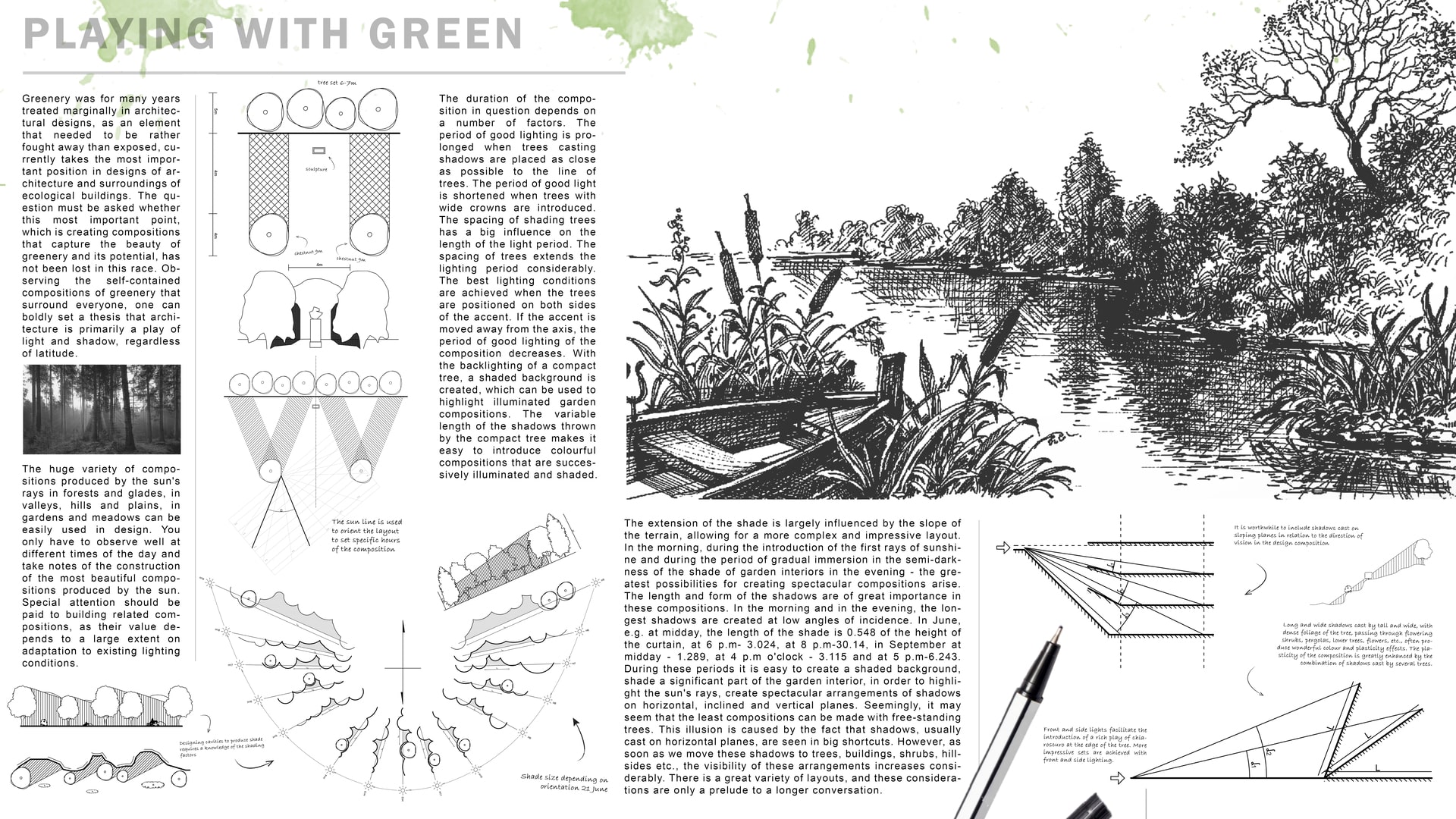Project Description
Playing with green – a game popular before the war belonged to favorite spring games for many centuries in my country. The rules of the game state that each participant has to take care to carry something green on him/her, something coming from the world of nature (at least a leaf, grass) and constantly keep on replacing it with fresh greens. Observation of the increasing number of realizations of the objects of the so-called green architecture in the world gives an impression that also today many of architects have to use ‘something green’ – something natural in its design. Why does everyone want to play with green? The main aim of that paper is describing of Arboreal Architecture idea and its possibilities of contemporary interpretations. The aim of the research is to present the possibilities we have and have recently been lost. It should be noted that this work is only a starting point for further considerations, because the topic is so extensive that it is impossible to describe it in a short sentence. It requires observation, reflection and dialogue. Extensive and intensive roof gardens, gardens established on all flat surfaces in buildings – balconies, terraces, loggias, narrow wall projections and, finally, green walls both traditionally wrapped with different vines as well as covered with modern structures filled with an almost unlimited number of plant species that, thanks to the electronic system of irrigation and fertilization, can grow without hindrances also vertically. Of course, these solutions should not be denied, but it should be considered whether the use of greenery is justified in some cases. In the European climate, the average water transpiration of 1 dcm2 of leaf surface is 1 to 4 g in the shade and 3 to 11 g per day in sunny areas. Heavy cooling of the leaves by evaporation causes temperature reduction in the shade of the building. This effect should be used to create a suitable microclimate for garden and residential interiors and a local or polis climate. In the forest, consisting of fond of light trees, there is a lush undergrowth with forest runes. Under the fond of shadow trees, which form a dense concentration, the soil is covered with ordinary fallen leaves. The introduction of excessive shade into green areas prevents many plants from vegetation. Nowadays we can often see trees and plants planted on the edge of balconies, but often designers forget about a very important aspect, which is the phototropic bend of plants, occurring under one-sided diffuse light. Plants designed close to the balcony, but not within the sunlight, bend towards the light. This reaction of plants to sunlight often reduces their aesthetic values. Plants intended for interior decoration, by turning away from the source of light, cease to be ornaments. In conclusion, the main message of architecture and urban planning should be to use all technical and economic possibilities to create the best possible conditions for the mental and physical development of the inhabitants, the development of social life and the experience of beauty. The question should be asked whether this most important point, which is creating compositions that capture the beauty of greenery and make full use of the potential, has not been lost in this race. Observing the self-contained compositions of greenery that surround us everywhere, one can boldly put forward a thesis that architecture is primarily a play of light and shadow, regardless of latitude. Unfortunately, the huge historical material in this area is still unexplored and unused. Wonderful sunny compositions, occurring every year in the Hadrian villa, Versailles or Babola's gardens, are still not analyzed. It is worth noting that there are cases of uncritical transfer of existing compositions extracted by shade and light to the designs, without the influence of lighting. In my country, over 40% of the population lives in villages in buildings surrounded by greenery. Assuming that about 60% of residential buildings in the city are also surrounded by greenery - the total population living in green buildings is about 70%. Re-development of the method of designing solar art in gardens, landscapes, urban and rural settlements, enabling architects to extract - at low cost - the maximum effects of colour, plasticity, shade and light, is necessary.
